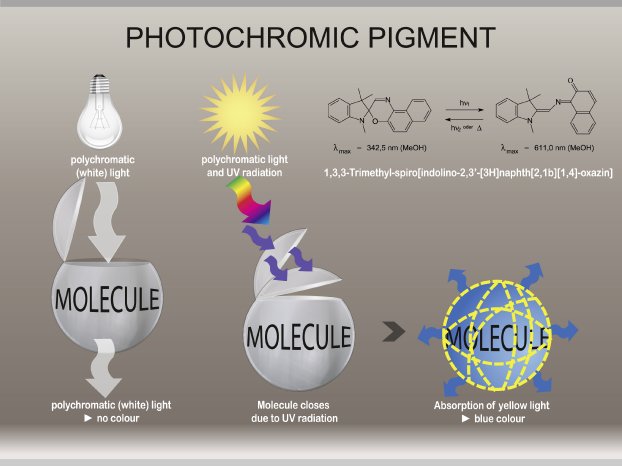Now there are also plans to enable textiles to change colour depending on sunlight, and therefore set the stage for completely new products. Researchers at the Hohenstein Institute in Boennigheim are working on developing photochromic textile materials.
Dr. Jan Beringer, head of research at the Function & Care department, foresees a number of different application options, such as self-darkening curtains, sunshades and blinds: "One should also not underestimate the opportunities this may create for the clothing industry. In addition to creating a considerable number of fashion effects, it is also conceivable that such materials are used to carry out useful functions such as increasing UV protection by changing the colour of the garment (depending on the situation). By developing such innovative products, the German clothing and home textile industry is taking another enormous know-how step towards the future."
Project manager Dr. Edith Claßen from Dr. Beringer's research team also thinks that these research results can be transferred to other materials: "Photochromic lacquers and glass coatings with intelligent functions could be very interesting for the automotive industry, for example. In this case, a change of colour can serve a protective function, whereby the material automatically converts into a signal colour upon dusk or bad weather conditions.
At this point, the researchers are still at the beginning of their work, however. Based on initial sample materials, the photochromic molecules "tire" after a period of time, and the textiles do not change colour, or only with a considerable delay. There are plans to better protect photochromic systems against this "tiring" effect by using photo-oxidation - a chemical reaction using light and oxygen.
IGF project AiF-Nr. 15176 N/1 of the Forschungsvereinigung Forschungskuratorium Textil e.V., Reinhardtstraße 12 - 14, 10117 Berlin, has received support from the AiF as part of the Programme for the Promotion of Industrial Joint Research and Development (IGF) of the German Ministry for Economy and Technology based on a resolution of the German Bundestag.



